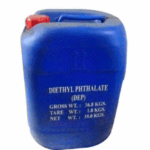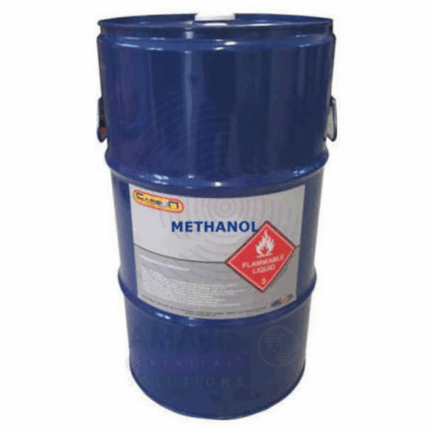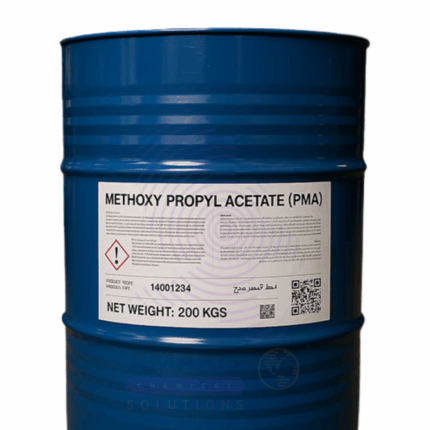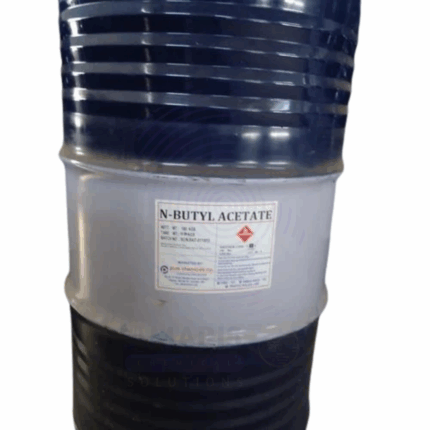Diethyl Glycol
Whatsapp Order
Diethyl Glycol is a clear, colorless, hygroscopic, and viscous liquid with a mild odor. It is a diol with two hydroxyl groups, making it a versatile chemical intermediate and solvent. DEG is miscible with water, alcohols, and many organic solvents. It is widely used in the manufacture of plasticizers, solvents, resins, and as an intermediate in chemical syntheses. Due to its high boiling point and solvent properties, DEG finds broad applications across industrial, pharmaceutical, and cosmetic sectors.
Categories: Solvents(paint), Solvents(lab)
Tags: Chemical industry, Clear liquid chemical, DEG, Diethyl Glycol, Industrial solvent, Plastics and resins
Description
Table of Contents
Toggle
Diethyl Glycol
Primary Uses
- Industrial Solvent
- Used as a solvent and co-solvent in paints, inks, dyes, resins, and adhesives due to its excellent solvency and compatibility with many materials.
- Functions as a humectant in industrial processes to retain moisture and improve product texture.Plasticizer Production
- Serves as a key raw material in synthesizing plasticizers, particularly for polyvinyl chloride (PVC) products, improving flexibility and durability.Chemical Intermediate
- Used in the synthesis of polyester resins, plasticizers, and lubricants.
- Important intermediate in producing brake fluids and antifreeze formulations.Pharmaceutical & Cosmetic Applications
- Used as a solvent and humectant in some pharmaceutical preparations and personal care products.
- Occasionally employed in topical formulations and lotions as a moisturizing agent.Printing Industry
- Employed in printing inks as a solvent to improve drying times and gloss.
Secondary Uses
- Textile Industry
- Used as a humectant and softening agent in textile finishing.Electronics Industry
- Utilized as a solvent for cleaning and degreasing electronic components.Laboratory Applications
- Serves as a solvent and reagent in chemical laboratories for organic synthesis.Household Products
- Found in some cleaning agents and detergents as a solvent and moisture-retaining additive.
KEY PRODUCT FEATURES
1. Basic Identification Attributes
- Chemical Name (IUPAC): Diethylene glycol
- Common/Trade Name: Diethyl Glycol, DEG
- CAS Number: 111-46-6
- HS Code: 2905.44.00
- Molecular Formula: C4H10O3
- Synonyms:
- Diethylene glycol
- DEG
- Ethylene glycol diethyl ether (less common)
2. Physical & Chemical Properties
- Physical State: Clear, colorless viscous liquid
- Odor: Mild, sweetish
- Boiling Point: 245°C (approximate)
- Melting Point: -10°C
- Density: Approx. 1.118 g/cm³ at 20°C
- Solubility: Miscible with water, alcohols, and many organic solvents
- Vapor Pressure: Low at room temperature
- Stability: Stable under normal storage; avoid strong oxidizers
3. Safety & Hazard Attributes
- Hazard Class (GHS): Harmful if swallowed; may cause damage to organs through prolonged exposure
- Toxicity: Moderate acute toxicity; ingestion can be fatal
- Exposure Limits: Follow OSHA/NIOSH guidelines
- Flammability: Combustible liquid with flash point around 111°C
4. Storage & Handling Attributes
- Storage Conditions: Store in tightly closed containers in a cool, dry, well-ventilated place
- Container Type: Steel drums or HDPE containers
- Shelf Life: 2–3 years if stored properly
- Handling Precautions: Use PPE; avoid ingestion and inhalation; prevent spills
5. Regulatory & Compliance Attributes
- Registered under REACH and other chemical inventories worldwide
- Listed as a toxic chemical in some regulations due to toxicity concerns
- Strict control in pharmaceutical and food-related applications
6. Environmental & Health Impact
- Ecotoxicity: Moderately toxic to aquatic organisms; avoid release to waterways
- Persistence: Biodegradable under aerobic conditions
- Bioaccumulation: Low potential
- Carcinogenicity/Mutagenicity: Not classified as carcinogenic
SAFETY HANDLING PRECAUTIONS
Safety Handling Precautions
PPE Required:
- Chemical-resistant gloves (nitrile or neoprene)
- Safety goggles or face shield
- Lab coat or protective apron
- Respiratory protection if ventilation is poor
Handling Guidelines:
- Avoid ingestion, inhalation, and skin contact
- Use in well-ventilated areas or under fume hood
- Avoid exposure to heat and oxidizing agents
- Prevent spills and environmental release
Storage Measures:
- Keep container tightly closed and upright
- Store in a cool, dry, well-ventilated area away from ignition sources
- Avoid contact with incompatible materials (strong oxidizers, acids)
Hygiene Practices:
- Wash hands thoroughly after handling
- Do not eat, drink, or smoke when handling product
- Use good industrial hygiene and housekeeping practices
First Aid Measures
- Inhalation: Move to fresh air immediately; seek medical attention if breathing difficulty occurs
- Skin Contact: Wash with soap and water; seek medical advice if irritation develops
- Eye Contact: Rinse immediately with water for 15 minutes; get medical attention
- Ingestion: Do not induce vomiting; rinse mouth and seek emergency medical care immediately
Firefighting Measures
- Fire Hazards: Combustible liquid; emits toxic fumes when burned
- Extinguishing Media: Use foam, dry chemical powder, or carbon dioxide
- Special Precautions: Wear full protective gear and self-contained breathing apparatus
- Decomposition Products: Carbon monoxide, carbon dioxide, and other toxic gases
Related products
Butyl Glycol
Butyl Glycol, also known as 2-Butoxyethanol, is a colorless to pale yellow liquid with a mild, sweet ether-like odor. It is an organic solvent classified as a glycol ether, with the molecular formula C6H14O2. Butyl Glycol is highly miscible with water, alcohols, and many organic solvents. It is widely used in industrial and commercial applications due to its excellent solvent properties, low volatility, and moderate toxicity. Its high solvency and compatibility with both aqueous and organic phases make it valuable in coatings, cleaning products, inks, and adhesives.
Ink Reducer
Ink Reducer Ethanol is a volatile, colorless liquid used to adjust the viscosity, flow, and drying time of printing inks. Composed primarily of high-purity ethanol (ethyl alcohol), it acts as a solvent or diluent in various ink systems—particularly in flexographic, gravure, and screen printing. This reducer enhances printability by improving ink transfer, leveling, and penetration into substrates. Ink reducers based on ethanol are fast-drying and widely compatible with alcohol-soluble and water-alcohol hybrid inks used in packaging, label printing, and paper conversion industries.
Methanol
$ 1.15
Methanol, also known as methyl alcohol or wood alcohol, is a clear, colorless, volatile, and flammable liquid with a distinct alcoholic odor. It is the simplest alcohol and is widely used as an industrial solvent, antifreeze, fuel, and chemical feedstock. Methanol is highly miscible with water and many organic solvents and serves as a precursor to numerous chemicals including formaldehyde, acetic acid, and various plastic
Methoxy Propyl Acetate
Methoxy Propyl Acetate is a clear, colorless liquid solvent with a mild fruity odor. It is an ester derived from methoxy propanol and acetic acid, widely used in coatings, inks, adhesives, and cleaning products due to its excellent solvency, moderate evaporation rate, and good compatibility with various resins. PMA offers low volatility and strong solvency for a broad range of materials, making it ideal for industrial and commercial applications.
N-Butanol
N-Butanol (1-butanol) is a four-carbon linear alcohol with the chemical formula C₄H₉OH. It is a colorless, flammable liquid with a mild, alcoholic odor. N-Butanol is widely used as a solvent in paints, coatings, adhesives, and chemical synthesis. It serves as an intermediate in the manufacture of plasticizers, butyl acrylate, and other chemicals. Its moderate volatility and solvent properties make it valuable in industrial and commercial applications.
Normal Butyl Acetate
Normal Butyl Acetate (n-Butyl Acetate) is a clear, colorless, flammable liquid with a sweet, fruity odor. It is an ester formed by the reaction of acetic acid and n-butanol. Widely used as a solvent in various industries, it offers excellent solvency for many resins and coatings, making it a preferred choice in paints, adhesives, and inks. Its moderate evaporation rate contributes to good application properties.
Shellsol T
Shellsol T is a low aromatic, high-purity petroleum hydrocarbon solvent known for its excellent solvency power and relatively low odor. It is a clear, colorless liquid commonly used in coatings, adhesives, inks, and chemical processing where strong solvency with moderate evaporation rates is needed. Its balanced properties make it suitable for industrial applications requiring controlled drying and good compatibility with various resins and polymers.
White Spirit
White Spirit is a clear, colorless, petroleum-derived solvent widely used in industrial, commercial, and household applications. It is composed primarily of aliphatic and alicyclic hydrocarbons, offering excellent solvency properties, moderate evaporation rate, and low odor varieties. White Spirit serves as a powerful degreaser, paint thinner, and cleaning agent, facilitating effective removal of oils, greases, and paints.


 Preservatives(food)
Preservatives(food) Flavor Enhancers
Flavor Enhancers Acidulants
Acidulants Sweeteners
Sweeteners Antioxidants
Antioxidants Colorants(food)
Colorants(food) Nutraceutical Ingredients (food)
Nutraceutical Ingredients (food) Nutrient Supplements
Nutrient Supplements Emulsifiers
Emulsifiers
 Collectors
Collectors Dust Suppressants
Dust Suppressants Explosives and Blasting Agents
Explosives and Blasting Agents Flocculants and Coagulants
Flocculants and Coagulants Frothers
Frothers Leaching Agents
Leaching Agents pH Modifiers
pH Modifiers Precious Metal Extraction Agents
Precious Metal Extraction Agents
 Antioxidants(plastic)
Antioxidants(plastic) Colorants (Pigments, Dyes)
Colorants (Pigments, Dyes) Fillers and Reinforcements
Fillers and Reinforcements Flame Retardants
Flame Retardants Monomers
Monomers Plasticizers
Plasticizers Polymerization Initiators
Polymerization Initiators Stabilizers (UV, Heat)
Stabilizers (UV, Heat)
 Antifoaming Agents
Antifoaming Agents Chelating Agents
Chelating Agents Coagulants and Flocculants
Coagulants and Flocculants Corrosion Inhibitors
Corrosion Inhibitors Disinfectants and Biocides
Disinfectants and Biocides Oxidizing Agents
Oxidizing Agents pH Adjusters
pH Adjusters Scale Inhibitors( water)
Scale Inhibitors( water)
 Antioxidants(cosmetic)
Antioxidants(cosmetic) Emollients
Emollients Fragrances and Essential Oils
Fragrances and Essential Oils Humectants
Humectants Preservatives
Preservatives Surfactants(cosmetic)
Surfactants(cosmetic) Thickeners
Thickeners UV Filters
UV Filters
 Fertilizers
Fertilizers Soil Conditioners
Soil Conditioners Plant Growth Regulators
Plant Growth Regulators Animal Feed Additives
Animal Feed Additives Biostimulants
Biostimulants Pesticides (Herbicides, Insecticides, Fungicides)
Pesticides (Herbicides, Insecticides, Fungicides)
 Active Pharmaceutical Ingredients (APIs)
Active Pharmaceutical Ingredients (APIs) Excipients
Excipients Solvents(pharmaceutical)
Solvents(pharmaceutical) Antibiotics
Antibiotics Antiseptics and Disinfectants
Antiseptics and Disinfectants Vaccine Adjuvants
Vaccine Adjuvants Nutraceutical Ingredients (pharmaceutical)
Nutraceutical Ingredients (pharmaceutical) Analgesics & Antipyretics
Analgesics & Antipyretics
 Analytical Reagents
Analytical Reagents Solvents(lab)
Solvents(lab) Chromatography Chemicals
Chromatography Chemicals Spectroscopy Reagents
Spectroscopy Reagents microbiology-and-cell-culture-reagents
microbiology-and-cell-culture-reagents Molecular Biology Reagents
Molecular Biology Reagents Biochemical Reagents
Biochemical Reagents Inorganic and Organic Standards
Inorganic and Organic Standards Laboratory Safety Chemicals
Laboratory Safety Chemicals Specialty Laboratory Chemicals(Special Laboratory Equipment)
Specialty Laboratory Chemicals(Special Laboratory Equipment)
 Demulsifiers
Demulsifiers Hydraulic Fracturing Fluids
Hydraulic Fracturing Fluids Scale Inhibitors(oil)
Scale Inhibitors(oil) Surfactants(oil)
Surfactants(oil) Drilling Fluids
Drilling Fluids
 Dyes and Pigments
Dyes and Pigments Bleaching Agents
Bleaching Agents Softening Agents
Softening Agents Finishing Agents
Finishing Agents Antistatic Agents
Antistatic Agents
 Admixtures
Admixtures Waterproofing Agents
Waterproofing Agents Sealants and Adhesives
Sealants and Adhesives Curing Compounds
Curing Compounds Concrete Repair Chemicals
Concrete Repair Chemicals Anti-Corrosion Coatings
Anti-Corrosion Coatings
 Surfactants(cleaning)
Surfactants(cleaning) Builders
Builders Enzymes
Enzymes Solvents (Cleaning)
Solvents (Cleaning) Fragrances
Fragrances
 Electronic Chemicals
Electronic Chemicals Catalysts
Catalysts Lubricants
Lubricants Photographic Chemicals
Photographic Chemicals Refrigerants
Refrigerants Automotive chemicals
Automotive chemicals Pyrotechnic Chemicals
Pyrotechnic Chemicals
 Biodegradable Surfactants
Biodegradable Surfactants Bio-based Solvents
Bio-based Solvents Renewable Polymers
Renewable Polymers Carbon Capture Chemicals
Carbon Capture Chemicals Wastewater Treatment Chemicals
Wastewater Treatment Chemicals
 Pigments
Pigments Solvents(paint)
Solvents(paint) Specialty Coatings
Specialty Coatings Binders/Resins
Binders/Resins Additives
Additives Driers
Driers Anti-Corrosion Agents
Anti-Corrosion Agents Functional Coatings
Functional Coatings Application-Specific Coatings
Application-Specific Coatings
 Fresh Herbs
Fresh Herbs Ground Spices
Ground Spices Whole Spices
Whole Spices Spice Blends
Spice Blends Dried Herbs
Dried Herbs
 Leavening Agents
Leavening Agents Dough Conditioners
Dough Conditioners Flour Treatments
Flour Treatments Fat Replacers
Fat Replacers Decoratives
Decoratives Preservatives(baking)
Preservatives(baking)
 Plasticizers & Softeners
Plasticizers & Softeners Reinforcing Agents
Reinforcing Agents Adhesion Promoters
Adhesion Promoters Vulcanizing Agents
Vulcanizing Agents Antidegradants
Antidegradants Blowing Agents
Blowing Agents Fillers & Extenders
Fillers & Extenders Accelerators & Retarders
Accelerators & Retarders
![Diethanolamine [C4H11NO2 or (CH2CH2OH)2NH] Amaris Chemicals](https://amarischemicalsolutions.com/wp-content/uploads/2025/07/Diethanolamine-C4H11NO2-or-CH2CH2OH2NH-Amaris-Chemicals-150x150.png)
























